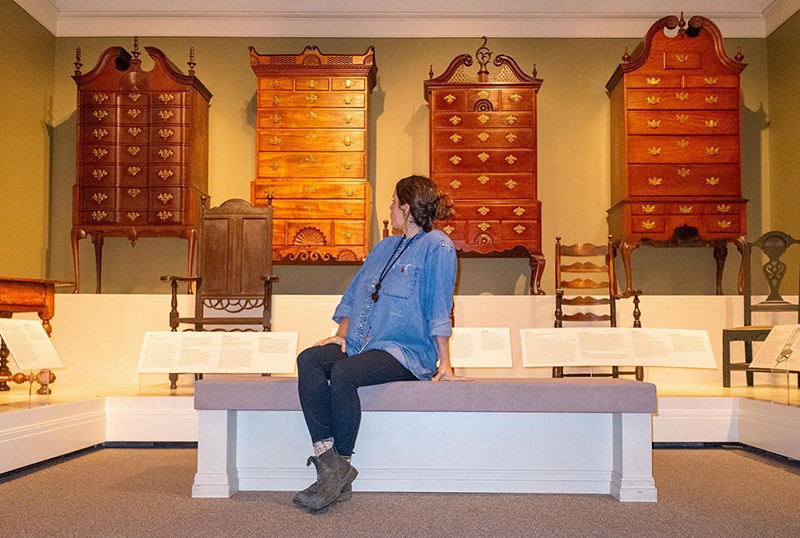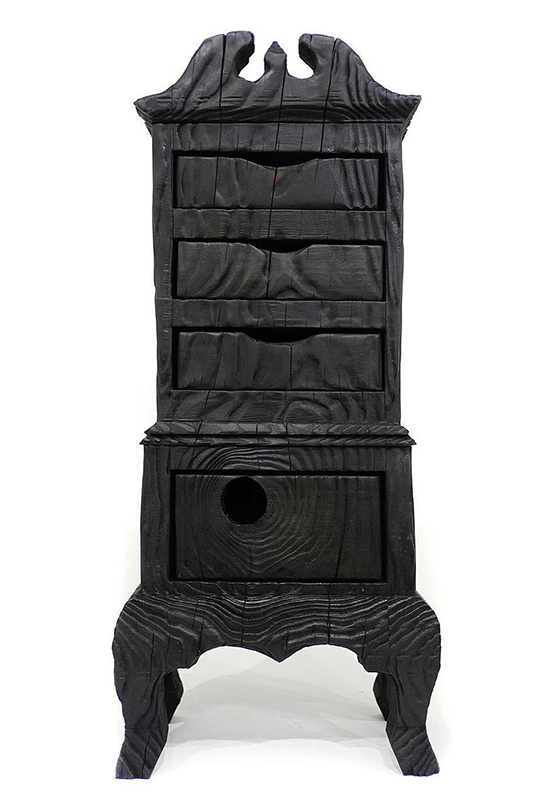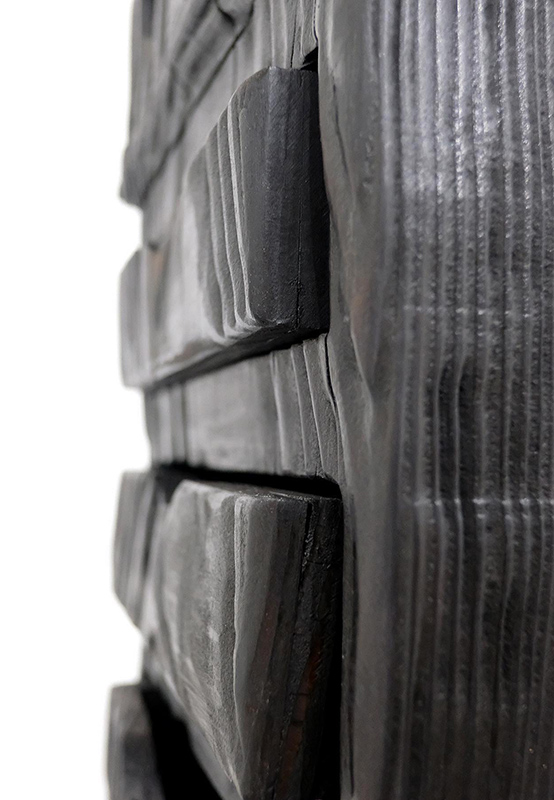Deconstructing the Highboy with Ellie Richards
When Ellie Richards read Ta-Nehisi Coates’s fictional novel The Water Dancer, she was particularly inspired by this quote: “My father had taken note of the restored highboy. And so it came down from Roscoe that my task would now be the resurrection of furniture pieces from ages past. I read documents from my father’s study that detailed the precise date each piece was fashioned or purchased, some stretching all the way back to the progenitor, so that these pieces came to represent a story of my ancestry. An ancestry that would end with me, a slave, sold away from this land, unable to save it or the people who’d built it and burnished it and made it thrive, who would be broken apart and scattered to the wind, but still in chains.”
After encountering Coates’s story about a furniture maker who is enslaved and who is working on the restoration of a highboy, Ellie—an accomplished artist, furniture-maker, and sculptor—began a journey to investigate the lives and work of enslaved African American cabinetmakers. She asked to whom she owes her interpretations and appreciation of archetypal furniture forms and methods of construction.
She embarked on a research project titled The Highboy’s Understory: Deconstructing the Icon, which led her to become the first ever Winterthur-Decorative Arts Trust Maker-Creator Fellow. Ellie says that her first visit to Winterthur in November 2021 “barely scratched the surface, but it was an invigorating opportunity for deep investigation and discovery.”
Ellie created a sculptural piece reminiscent of traditional highboys but respectful of enslaved artisans’ work in furniture design and fabrication.
The piece, named Shadow Box, was made with remnants from a construction site. The wood species is a softwood called Douglas Fir. Softwoods are not typically used in fine furniture, but the trees grow fast and have a distinct grain pattern that lends itself to the Japanese technique of shou sugi ban, a method of charring the wood as a way to seal it.
Shou sugi ban presents an opportunity to create an amplified texture of the grain pattern by scrubbing away the charred early wood and rendering the late wood (slow-growing, more dense) more pronounced. Ellie finished this piece with a coat of black gesso and shellac.
“The way I made the box is using the bandsaw box method, which slices a solid block of wood into different shapes and is then glued back together with spaces for drawers intact,” Ellie shares. “The end result creates a piece that is very stripped down. The highboys in the collection are incredibly intricate and refined. This small box is very rough, raw, and simplistic. In stripping away the fine details, I could focus on the gestural form and mood of the highboy.”
Shadow Box is the first in a series where Ellie will be exploring more ways to express mood and gesture using this furniture form.
“Decoding the highboy chests while making this shadow of one in the bandsaw box format is my own simple practice in transporting from one way of thinking to another,” she states. “Every piece of furniture has a story and a slice of history to offer—I’m listening.”
The Maker-Creator Fellowship is a continuing education opportunity offered as part of the Decorative Arts Trust’s Emerging Scholars Program.
About The Decorative Arts Trust Bulletin
Formerly known as the "blog,” the Bulletin features new research and scholarship, travelogues, book reviews, and museum and gallery exhibitions. The Bulletin complements The Magazine of the Decorative Arts Trust, our biannual members publication.










